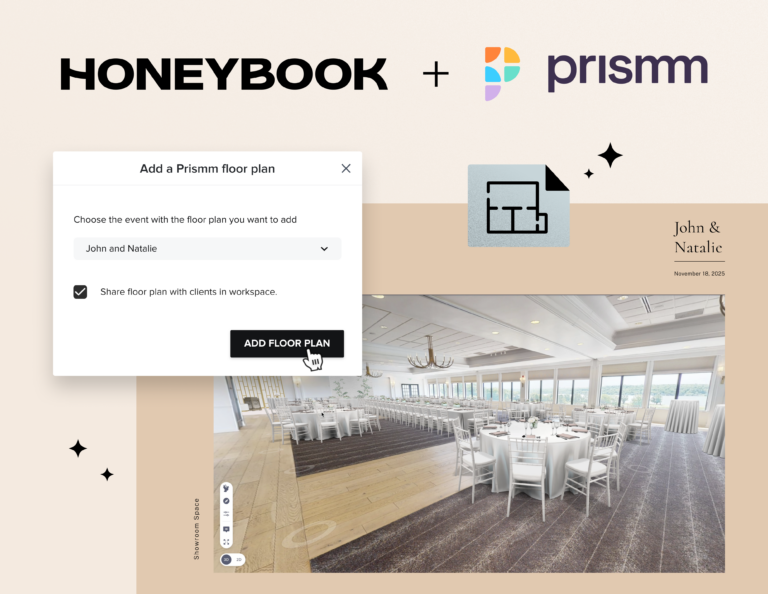Retainer fees can secure stable income, foster client commitment, and drive continued growth for consultants, coaches, and other service providers. Discover how integrating retainer fees can benefit your business.

Do you charge retainer fees? In a retainer agreement, the client makes an upfront payment or payments in exchange for ongoing services such as consultation.
Many independent businesses — including consultants, designers, and coaches — can benefit from charging retainer fees. They can help stabilize cash flow, guarantee revenue, and build lasting relationships with loyal clients.
Clients can also benefit from retainers because they’re guaranteed a specific amount of time or access in exchange for the fee. This means that they can get the consultation, advice, or coaching they need because they’ve already paid for it.
Read on to learn more about the types of retainer fees, how to use them, and the best way to process and collect them.
Jump to:
- What is a retainer fee agreement
- Examples of small business retainer fees
- What types of businesses use retainer agreements
- Benefits of using retainer agreements
- How does a retainer fee work?
- How to implement a retainer fee
- How do you calculate a retainer fee?
- How to structure payment
- What’s the difference between a retainer fee and a deposit?
- Types of retainer fees
- What are the best practices for maintaining positive retainer relationships?
- How do you calculate ROI on retainer clients?
- Strategies for mitigating risks associated with retainer agreements
- Get paid faster with automatic payments on an invoicing platform

Use HoneyBook’s ironclad contract templates to protect your business and clients.
What is a retainer fee agreement?
A retainer fee agreement, or retainer contract, is a legal agreement in which the client pays a set fee in exchange for your future or recurring services. Clients find details like the duration of the agreement and the fee amount in the contract.
Examples of small business retainer fees
The kinds of businesses that use retainer fees tend to be service businesses of any size, including small independent businesses with or without subcontractors.
Examples of small businesses using retainer fees include:
- Marketing service business: Marketers, including independent marketing consultants, can be retained by clients, who will pay a fee for marketing ideas or projects that may be paid month by month.
- Accountants: Accounting is one area that many business or individual clients may want to pay to get sustained service.
- Financial services: A client may pay a retainer fee to have a financial adviser on call to help with any number of financial issues.
- Information technology (IT) services: Clients often need ongoing technical work done by an IT service, such as making monthly backups, updating code, performing continual security measures, and more.
What types of businesses use retainer agreements
Many kinds of businesses can benefit from retainer fees. If your business offers ongoing services or you’re on call for emergency help, for example, you may want to set up a retainer agreement with your clients. Businesses that typically benefit from retainer agreements include:
- Attorneys
- Paralegals
- Consultants
- Advisers
- Coaches
- Graphic designers
- Marketers
- Accountants
- Freelancers
- Other types of professionals
Benefits of using retainer agreements
So why are retainer agreements so popular? Retainer fees offer a level of stability and predictability that can be crucial for the success of small, independent businesses. Retainer fees add to the business’s positive cash flow and the more retainer fees there are, the more predictable the cash flow is.
If you communicate the terms of your retainer agreement well, your clients will be on the same page as you and expect recurring fees. This leads to fewer disputes and happier clients who can expect a certain amount of service from you each billing period. Clients who have retained your services trust you. Continued services and strong referrals can lead to lasting business relationships and expanded opportunities.
To sum it up, the benefits of retainer agreements include:
- Stability
- Predictability of revenue
- Positive cash flow
- Fewer disputes
- Trust-building
- Lasting relationships
How does a retainer fee work?
A retainer fee functions as a guaranteed payment for your services and sets the precedent for your client’s expectations. Retainer fees cover future expenses for some duration before paying the final invoice because clients provide funds upfront.
Like any contract clause, a retainer fee clause can protect you from not getting paid. Contracts spell out the obligations of the parties so there are clear expectations. This is especially important if there are any disputes because all the details of the agreement can be referred to, such as the precise amount of the fee and the due dates agreed upon. A retainer agreement helps the client understand what they are paying for, how often they pay, and how to pay the fees. In return, you guarantee service to your client, giving them the optimal experience.
How to implement a retainer fee
The first step is to write a retainer agreement as part of your service contract. At this point, it’s a good idea to consult a lawyer to ensure that the terms are legally binding in your location and that the contract provides sufficient protection for you and your business.
The following are some basic elements of most retainer agreements.
- Basic details: List the names, addresses, and contact information of both parties involved.
- Scope: Specifically spell out what you are going to be doing for the client. You may also want to specify what you do not include in the service.
- Duration: Set an end date if the project is not recurring. The contract does not have a termination date if the service is ongoing.
- Payment terms: Detail what kinds of payments you accept.
- Retainer fee amount: Set the retainer fee and frequency.
- Rights and obligations of parties: Include the expectations of each party.
- Other clauses: Include other clauses that you and your lawyer feel are necessary. These clauses could be dispute resolution, arbitration clauses, force majeure clauses, termination clauses, or other contract clauses.
There is no one-size-fits-all way of calculating a retainer fee. You’ll need to consider the nature of your business, your business relationships, your particular service, your workload, and the amount of revenue you would like to bring in on a retainer basis that match what your clients are comfortable paying. Your clients may also want to negotiate the retainer fee.
In general, you can take these steps to calculate your retainer fee and collect payments:
How do you calculate a retainer fee?
- Define the scope of your deliverables: Be clear about what it is that you will do on the project and what you will not do.
- Check your calendar: Make sure you accurately estimate the amount of time you have free to work on the retained project.
- Estimate the time needed: Calculate the total number of hours the work will require so you can set that time aside for the project.
- Determine your hourly rate: Factor in your experience, the typical market rate for your type of work, and any overhead costs that need to be covered such as internet bills, professional insurance, or other regular costs.
- Calculate the retainer fee: The retainer fee will be the hourly rate times the total number of hours needed to work. For example, if your hourly rate is $100 and you will need 50 hours per month to work on a project, the retainer fee will be $5,000 ($100 × 50 = $5,000).
- Set up a safety net: You may consider adding a buffer to cover unexpected costs or time constraints, such as 10%. In that case, the retainer fee would be $5,500 in the above example.
- Set the retainer fee: Add the fee in a contract clause.
- Set up payment collection: Use a payment processor or a clientflow platform that has payment collection capabilities.
- Continue the retainer arrangement: Uphold your end of the agreement and be on call or do the work for the project you are being retained for.
How to structure payment
Once you have a contract with a retainer agreement, send your contract to the client securely using your online clientflow management platform. If you’re using HoneyBook, you will receive a notification that the client signed the contract.
The payment structure for a retainer depends on the details of your agreement. Clients can make monthly or quarterly payments for access-based and time-based retainer agreements. They can pay a flat fee each month for access to you and your expertise and services. You can accept payment via a variety of methods using a payment processor.
Work-based retainers are retainers for ongoing work, while project-based retainers are for the duration of a single project that will end whenever the project is completed. You can hold funds in a retainer account to pay your expenses as you incur them during the project. Payments for retainers can be recurring, such as monthly or quarterly for the duration of a project, or for continuing service, such as payments to retain a lawyer.
Be sure that your client knows what payment terms to expect so you can prevent chargebacks.
Related Post
How does payment processing work?
What’s the difference between a retainer fee and a deposit?
Retainers and deposits are very similar. A retainer is paid to the independent in advance to secure services, whereas a deposit may reserve a service or a date, but it’s typically refunded. Retainers are non-refundable.
Types of retainer fees
How you structure your retainer agreement depends on the services you’re providing and the type of project you’re working on. Here are some common retainer arrangements and examples of businesses that typically use them.
Project-based retainers
A project’s scope determines a project-based retainer, and it lasts until the work is complete. The project should have a clear scope with an established deadline. An example of project-based retainers might be an SEO marketing service that charges a fee for a set amount of work, and whose services are reserved with a retainer payment.
Time-based retainers
A client can pay for a predetermined amount of time-based work over a period, such as monthly or quarterly.
You can use a time-based retainer agreement when a project’s end date is unknown. This guarantees your services to the client for the number of months they pay in advance. Some examples of this are when a public relations company charges a retainer for services a given number of months in advance, or when an attorney charges monthly for working on a court case in progress.
If you use time-based retainers, you should also implement recurring billing. If not, you may still want to remind your clients when payment is coming up so they don’t forget.
Pay-for-access
This type of retainer agreement involves a client paying a professional, such as an accountant, to be available to the client as needed. Clients can make monthly or quarterly payments under this kind of agreement. The details of the retainer agreement will be included in the contract with the client. The contract will include a retainer agreement clause that stipulates that the services are retained with a retainer fee.
Attorneys often enter into pay-for-access retainer agreements in exchange for being on call whenever they’re needed. This can be beneficial for clients who may need emergency services and can call on the expert for immediate help.
Unearned retainer fees
An unearned retainer fee is a fee that is paid upfront for services that haven’t yet been rendered. This fee is put into an account and secures the time and availability of the expert, such as a consultant. Depending on the contract, some or all of this fee can be refundable if no service is rendered.
If services are rendered, the fee is earned as the work is completed. An example of an unearned retainer fee could be a consultant working on a business plan who will earn the fee once the work has been completed, such as the funding being issued after a pitch.
Earned retainer fees
An earned retainer fee is the portion of a retainer that is paid to the service provider, such as a consultant, as the work is being rendered. An example could be the portion of the retainer that the consultant is paid once the work starts. The consultant in this example is entitled to some of the retainer fee as work is being completed. Earned retainer fees can be granted to the consultant in milestones. For example, a percentage of the fee can be paid to the consultant after each part of the project is completed, such as deliverable creation, pitch preparation, and so on.
What are the best practices for maintaining positive retainer relationships?
Best practices for maintaining positive retainer relationships are in some ways similar to what you may already know about keeping positive relationships:
- Communicate clearly and often.
- Use legally compliant contracts with good retainer clauses that set expectations of the scope of work.
- Be transparent with your retainer fees with no hidden charges.
- Provide a consistently valuable service with high-quality work and meet deadlines.
- Be flexible and accommodate reasonable changes to the project.
- Resolve problems promptly and fairly.
- Request feedback from your clients and act on that feedback.
- Regularly seek to improve your services and your business in general.
- Continue to build strong relationships with your retainer clients.
How do you calculate ROI on retainer clients?
It’s always important to know the return on investment (ROI) for all your efforts, including your client acquisition, marketing, and any other investments you make in your business. The same is true for taking on retainer clients: You want to know what the ROI is when starting a new retainer agreement.
The basic calculation for retainer service ROI compares the overall value you receive from your retainer client to the cost of keeping that retainer agreement:
Retainer client ROI = (Net Profit / Total cost of investment) × 100
Include in the profit figure all the benefits and revenue that a particular client brings in, such as the total retainer fee. Add up all the costs associated with that retainer agreement. Dividing the profit by the costs should give you a number with a decimal point. Multiply that number by 100 to get the percentage.
Now what should you do after you’ve calculated the ROI on your retainer clients? If you are just drafting a contract and discover that you will not be getting an acceptable return, you should make adjustments, including adjusting the fee. If you already have an arrangement with a client, you can attempt to renegotiate the contract or drop the client in favor of more profitable relationships.
Strategies for mitigating risks associated with retainer agreements
Like with any other part of your business, implementing retainer agreements is not without risk. Nevertheless, there are several ways to mitigate common risks.
Scope creep
One of the potential risks associated with retainer agreements is scope creep. What is scope creep? When you write a contract, you typically spell out what you are going to do or not do as part of the project — this is the project’s scope. When the client agrees, they are essentially putting a limit on what they expect out of you for whichever price they are paying. If they demand more than what they paid for, often by demanding small increments of change to the scope, that is scope creep.
The creeping nature of this problem is what might catch you off guard. One little thing here and another little thing there can start to add up. Remember that you have already estimated the amount of time you are setting aside each month for this client. An expanding scope for that project means you are leaving less time for your other clients, which could mean losing business.
Ways to prevent scope creep include:
- Always have a comprehensive written contract with a scope and retainer fee clause.
- Be clear about how much time and effort you can apportion in your month for that client.
- Anticipate changes and implement a rule for contract changes, including scope changes and cost changes.
- Communicate regularly with your client and let them know how the changes affect your schedule and budgetary concerns.
- Offer solutions or provide options for additional projects, a new contract, or postponed work.
- Say no if you have to and refer to your contract if they say they want to walk away.
Client disputes
Another risk associated with retainer agreements is client disputes. Disputes can happen to the best of us, so it’s best to acknowledge that possibility and take measures to help mitigate the risk. One of the major benefits of having an ironclad, legally compliant contract is that you have a written agreement that you can refer to when disputes arise. A contract is useful as both a way to show someone that they may be mistaken to de-escalate a volatile situation, and also in the unfortunate event of a lawsuit.
For example, if your client is pushing you to work for more hours than you agreed to — see the issue of scope creep above — you can refer them to the written agreement that spells out how many hours you will work. Just because the client has retained your ongoing services and paid for them upfront doesn’t mean they can dictate how much you can work for them above and beyond the contracted amount. Just be sure when you are signing a new contract or starting a new retainer agreement that they should ask questions before they sign the agreement if anything isn’t clear.
Tips for dealing with difficult clients include:
- Always have an ironclad legal agreement
- Anticipate occasional troublesome clients and make a plan to deal with them
- Be empathetic to your client’s concerns
- Respond promptly
- Ask for specifics on their concerns and get everything in writing
- Offer solutions
- Just say no; sometimes you have no choice but to refuse demands
- Learn from mistakes
Get paid faster with automatic payments on an invoicing platform
Regardless of the type of retainer agreement that works best for your business, you’ll want to make payment collection as easy as possible. Get paid faster with a payment processing platform. With HoneyBook, you can combine every step of your clientflow—including booking, proposals, and contracts—all in one place. Get your retainer agreement set in place with a legally binding contract and collect your payments securely online.
With HoneyBook, independent businesses of all kinds have access to the tools and software they need to help with their clientflow from proposals to invoicing and more all on one platform.

Use ready-made attorney-review contract templates on HoneyBook.






